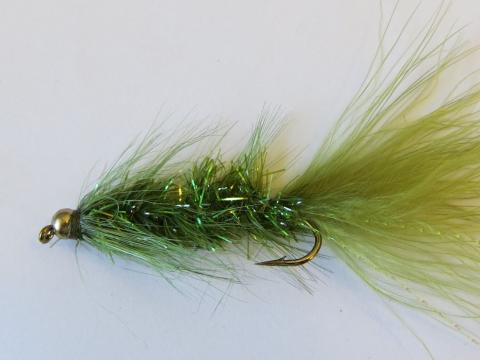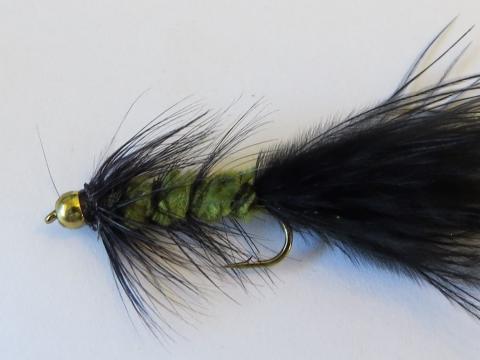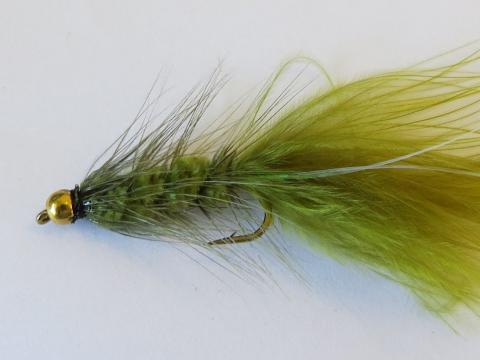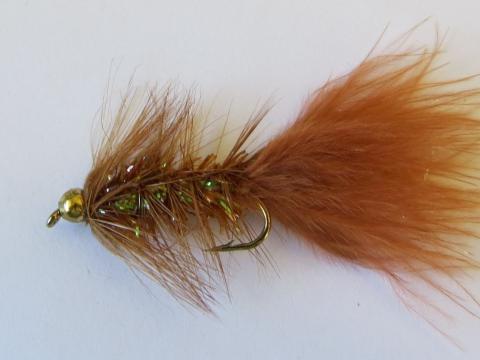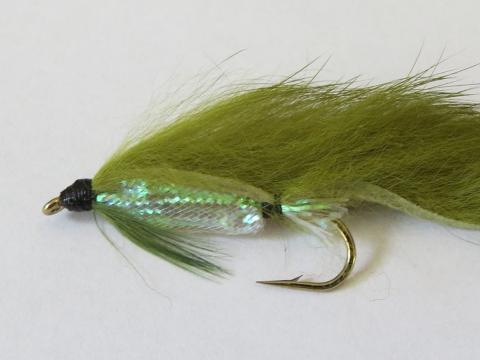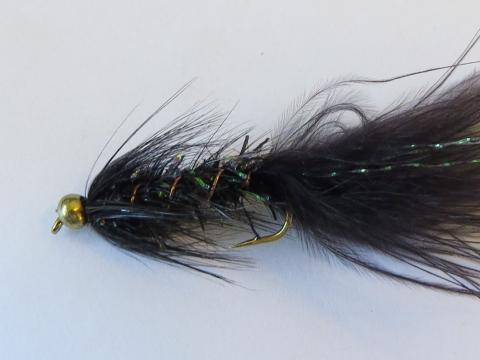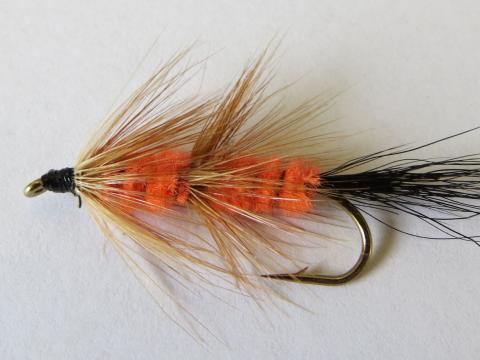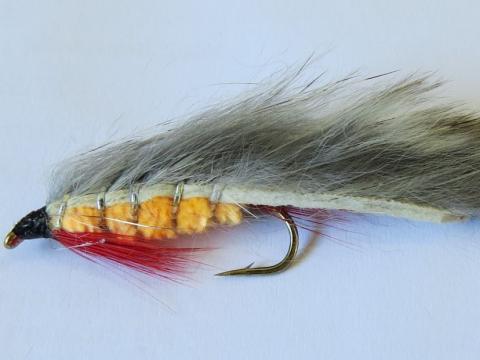Dan and I arrived at the dam at a gentlemanly hour of 9 AM. The water crafters were also arriving to have a day of dragging things around in circles and other patterns with screaming kids in tow. The forecast was for thunder and lightning in the afternoon. The morning was partly cloudy with a light southwesterly in our faces. The lake was already stained with algal bloom. Ten years ago this never happened.
Armed with a bead head Krystal olive woolly bugger, I paddled Dan up the west side of the lake. Being a southpaw, he wanted to cast to the right. My edge fishing technique has been well documented and it is very simple. I paddle a cast distance from the shoreline and the lucky angler casts to the edge. The momentum of the boat and the enthusiasm of the angler determine how the fly swims. You can just wiggle the fly to imitate a damsel nymph; twitch, strip, pause, lift your rod high or use a combination of all. You target a metre or two from the shoreline or structure then pick it up and cast back to the edge. It targets feeding trout in the shallows and can be extremely effective. We use a six weight rod or so and a floating fly line, usually with an eight pound fluorocarbon tippet as long as you can cast.
Dan, a novice fly fisherman, holds the record on Matahina with 25 fish landed in a day. I actually made him stop there then I caught six more.
So, about two hours later, fishless, we decided to paddle up past the island and fish towards the river. In a very shallow and weedy patch, I called, "Strike!"; Dan missed. Quite often trout take the fly from behind while swimming towards you. So unless you see this happen or see a wake in the water, you may never know if a trout has eaten then spat out your fly or not. Another telltale sign to act is when your line pauses.
A good piece of advice is not to strike at every nuance but definitely learn to strip. Stripping will very quickly tell you if something is there. If you sense something is up, strip for a metre, pause then carry on with your retrieve. It is also something you need to do when you see a trout lazily following your wet fly. Make that fly move as fast as you can for a metre or two then pause and watch what happens!
So it was actually really good news to see a fish as we were starting to think oh no we have to put on sinking lines or do some still water nymphing and be bored to death. Alas, not another fish was seen until we got into the clear river water. The wind was blowing downstream so clear river water made it well into the lake. When there is a northerly, the stained lake water pushes into the flow of the river and backs it up. There is a clear line of difference to be found. We will maybe talk about that some other time.
Now we were fishing in clear water with excellent visibility. I spotted the brown. Dan's line and fly were well past it. I told him to shorten up then cast to three o'clock and strip. Then I told him to strike and he figured out the rest and landed our first brown on the bead head krystal olive woolly bugger.
Off came that fly and on went a bead head olive and black woolly bugger. It took a little while before I called another strike and another nice brown came to the net.
Next it was my turn. One of my oldest friends who lives in Colorado saw one of my videos of me fishing last season and decided I needed a rocket taper for roll casting. So he sent me Ambush Triangle Taper from Royal Wulff Products. I talked to him Boxing Day and he asked if I had tried it yet. So I thought I should actually try it. Holy crap what a heavy shooting tip. I put on a bead head krystal black woolly bugger and rolled it out. I missed a hookup on the first cast. Moments later I missed another one. Seriously one roll later, I broke off the bugger and that was the only one I had with me, dammit. I then realised the tapered leader I had put on was complete shit so I cut it back to the thick part and put on a few metres of eight pound fluoro.
I put on a regular old bead head olive woolly bugger and tried again. The brown followed and I stripped, raised my rod as far as I could then paused. I had barely enough reach to set the hook and land our third brown of the day.
It was Dan's turn again. This time I tied on a bead head krystal brown woolly bugger. Dan landed our fourth brown of the day. We made it up to the end of the gorge and the thunder and lightning started in the near distance. We decided we better start back to the boat ramp which was a good couple hours of paddling. The wind kept changing and you could feel the cold, moist air and we were convinced we were going to get wet no matter what. So we fished our way back. Not far back into the dirty water I caught another brown stripping an olive zonker. It had been a long time since I actually used a rabbit fly and it did not let me down.
I put a red setter on Dan's rod. It got calm again but an eerie calm. We both tried the red setter for a while and could not raise a fish. I put on a dragon fly larva for Dan to try. I pointed out a nice weed bed edge for him to twitch along. He landed our sixth brown of the day.
Then it was an orange rabbit for the rest of the paddle back. Lightning was flashing in all directions but we were still dry. On the last little point before the boat ramp it was only just before 7 o'clock and it was almost dark. Dan missed another brown, twice. I never saw a rainbow all day. We got the canoe on the truck as it started to drizzle. By the time we started driving, it began to pour. That was a pretty lucky escape and a really quality day.







